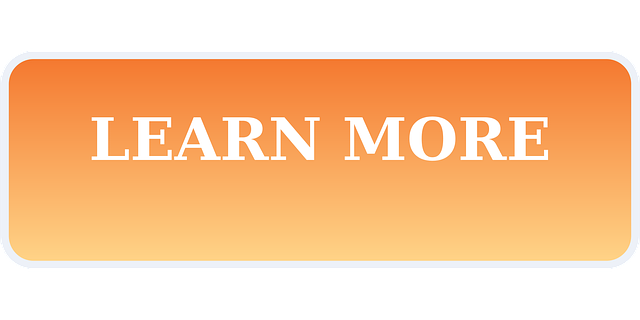Define website purpose and target audience for aligned design & content strategy. Choose right domain & web hosting for fast, secure access. Design using wireframes, HTML/CSS for structure & styling. Implement JavaScript or frameworks for interactivity & dynamic features. Optimize SEO, test usability, maintain with regular updates & analytics.
Building a website from scratch can seem daunting, but with a structured approach, it becomes achievable. This comprehensive guide takes you through every step of creating your online presence. First, define your website’s purpose and target audience. Then, secure a memorable domain name and reliable web hosting. Next, design the layout using HTML and CSS for an engaging user experience. Implement functionality with JavaScript or frameworks to enhance interactivity. Optimize, test, launch, and consistently maintain your website to ensure its success in today’s digital landscape.
- Choose Your Website Purpose and Target Audience
- Select a Domain Name and Web Hosting Provider
- Design Your Website Layout Using HTML and CSS
- Develop Website Functionality with JavaScript (or Frameworks)
- Optimize, Test, Launch, and Maintain Your Website
Choose Your Website Purpose and Target Audience

Before diving into the technical aspects of building a website, it’s crucial to define its purpose and understand your target audience. Your website’s primary function should be clear – whether it’s to showcase your business, sell products online, share information, or engage visitors through content. Knowing this will guide all subsequent decisions from design choices to content strategy.
For instance, a website aimed at students developing time management skills and stress management strategies would look vastly different from an e-commerce platform selling educational resources. Once you establish your site’s purpose, identify who you’re creating it for. Consider their demographics, interests, pain points, and online behaviors. This audience-centric approach ensures that your website resonates with visitors and effectively communicates the value it offers, even as it incorporates features like plagiarism detection tools to enhance user experience and learning outcomes. Visit us at plagiarism detection anytime for more insights.
Select a Domain Name and Web Hosting Provider

Choosing the right domain name and web hosting provider is a crucial step in building your website. Your domain name acts as your website’s unique address on the internet, while web hosting provides the server space to store your website’s files. Start by researching available domain names that best represent your website’s purpose. Consider keywords relevant to your target audience for optimal SEO benefits. Tools like Google’s Keyword Planner or plagiarism avoidance online research tools can aid in this process.
Once you’ve selected a domain name, it’s time to choose a reliable web hosting provider. Look for features like fast loading times, robust security measures, and ample storage space. Remember, your chosen host should align with your website’s current and future needs. For instance, if you plan on integrating e-commerce capabilities or expect high traffic, opt for a provider offering scalable resources and excellent team collaboration tools. Don’t forget to check reviews and compare plans before making your final decision. Ensure your host provides the necessary support for academic goal setting critical thinking exercises, especially when seeking help with content creation or finding us at resumè writing assistance and mental health resources.
Design Your Website Layout Using HTML and CSS

Designing your website layout using HTML and CSS is both an art and a science. It starts with creating wireframes, which are basic sketches or digital representations that map out the structure and content placement on each page. This step is crucial for establishing a logical flow and user-friendly experience. Once you’ve finalized your wireframes, it’s time to bring them to life using HTML, the backbone of your website’s structure, and CSS, responsible for its style and aesthetics.
HTML allows you to create elements like headings, paragraphs, images, and links, while CSS enables customization through colors, fonts, backgrounds, and layouts. By combining these two languages, you can craft a visually appealing and responsive design that adapts to different screen sizes. Remember, ethical research practices in web development, including user experience (UX) considerations and accessibility standards, are essential for creating websites that cater to diverse audiences. For productivity hacks, consider using version control systems like Git to manage your code changes, making collaboration easier and ensuring a robust peer review process. Even if you’re new to these languages, resources like an action research guide or online tutorials can help you learn and apply the necessary skills, ultimately enhancing your website-building capabilities. Visit us at Virtual Communication anytime for more insights and guidance.
Develop Website Functionality with JavaScript (or Frameworks)

Once your website’s structure and design are in place, it’s time to bring it to life with JavaScript or popular frameworks like React, Angular, or Vue. This step is crucial for adding interactivity and dynamic features to your site, enhancing user experience. JavaScript allows you to create responsive forms, engaging animations, and even incorporate advanced functionalities such as real-time data updates, which are essential for modern websites.
For a successful implementation, consider the nature of your website and its intended audience. A multilingual learning project management platform, for instance, would benefit from JavaScript’s capability to deliver dynamic content in multiple languages. Educational technology trends often involve remote learning strategies, so enabling interactive elements that facilitate online education is valuable. Moreover, memory improvement life skills development tools can be enhanced using JavaScript to create engaging quizzes or interactive study sessions. Explore various libraries and frameworks to streamline your development process and find us at team collaboration tools to stay updated with the latest advancements in website functionality.
Optimize, Test, Launch, and Maintain Your Website

After creating your website, it’s crucial to Optimize, Test, Launch, and Maintain It for a successful online presence. Optimization involves enhancing your site’s performance and user experience through SEO techniques, ensuring fast loading speeds, mobile responsiveness, and relevant content that ranks well in search engines. This step is key to attracting organic traffic and boosting your website’s visibility.
Testing before launch is vital to ensure academic integrity and deliver a high-quality learning experience. Utilize tools for usability testing and gather quantitative data on user behavior to identify and rectify issues. Once launched, ongoing maintenance ensures your website remains current, secure, and engaging. Regular updates with fresh content, bug fixes, and security patches are essential, especially in the realm of remote learning strategies and educational technology trends. Remember to monitor analytics for insights into user interactions, allowing you to refine your site based on real-world data and foster effective study habits among visitors. Find us at remote learning strategies educational technology trends for more resources.
Building a website from scratch can seem daunting, but by following these comprehensive steps, from defining your purpose and audience to launching and maintaining, you can create a robust and engaging online presence. Remember, each phase is crucial in crafting not just a site, but an experience that resonates with your visitors. Optimize your content, test thoroughly, and keep refining—your website will become a powerful tool for reaching and engaging your target audience.

Leave a Reply